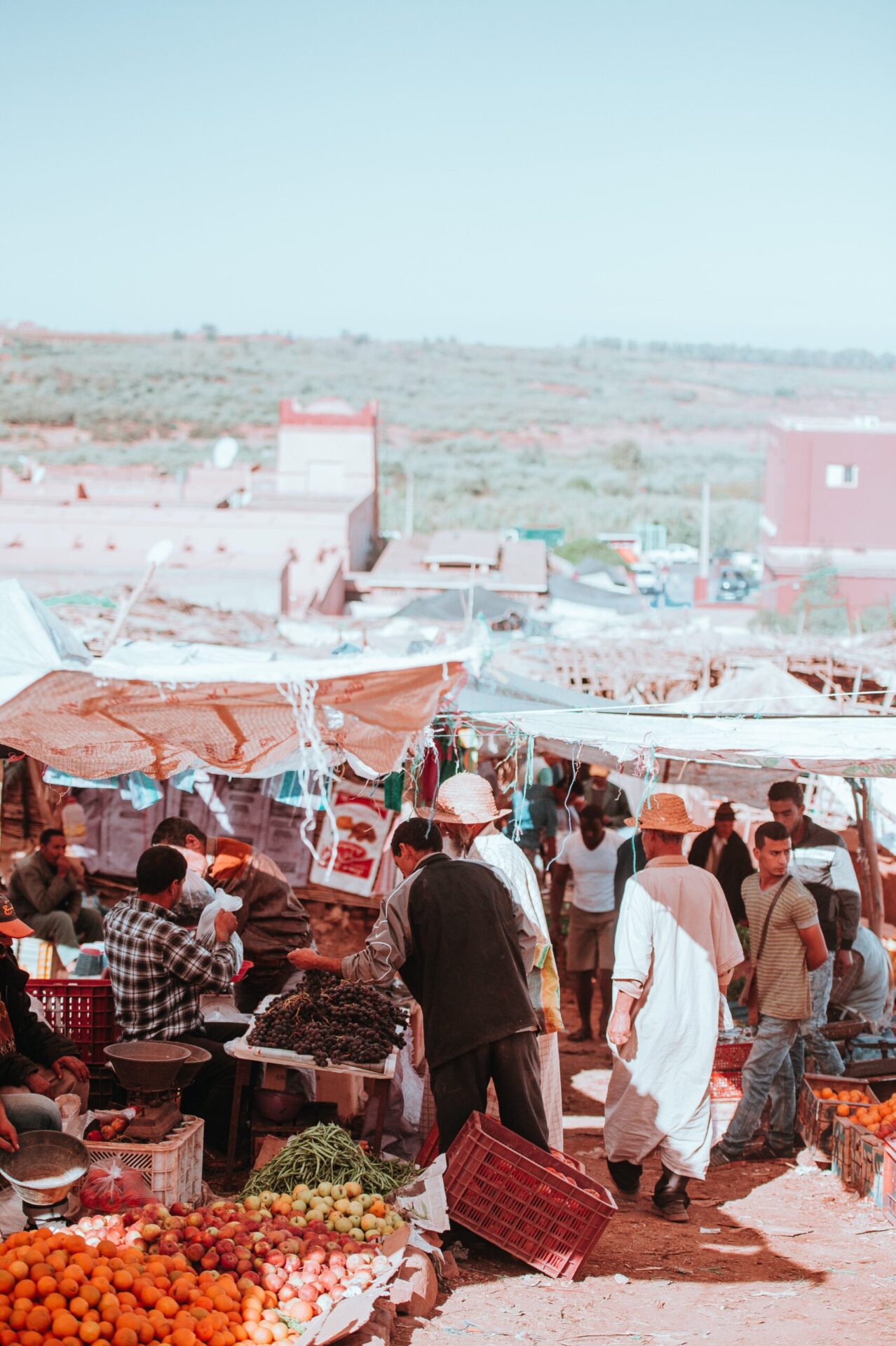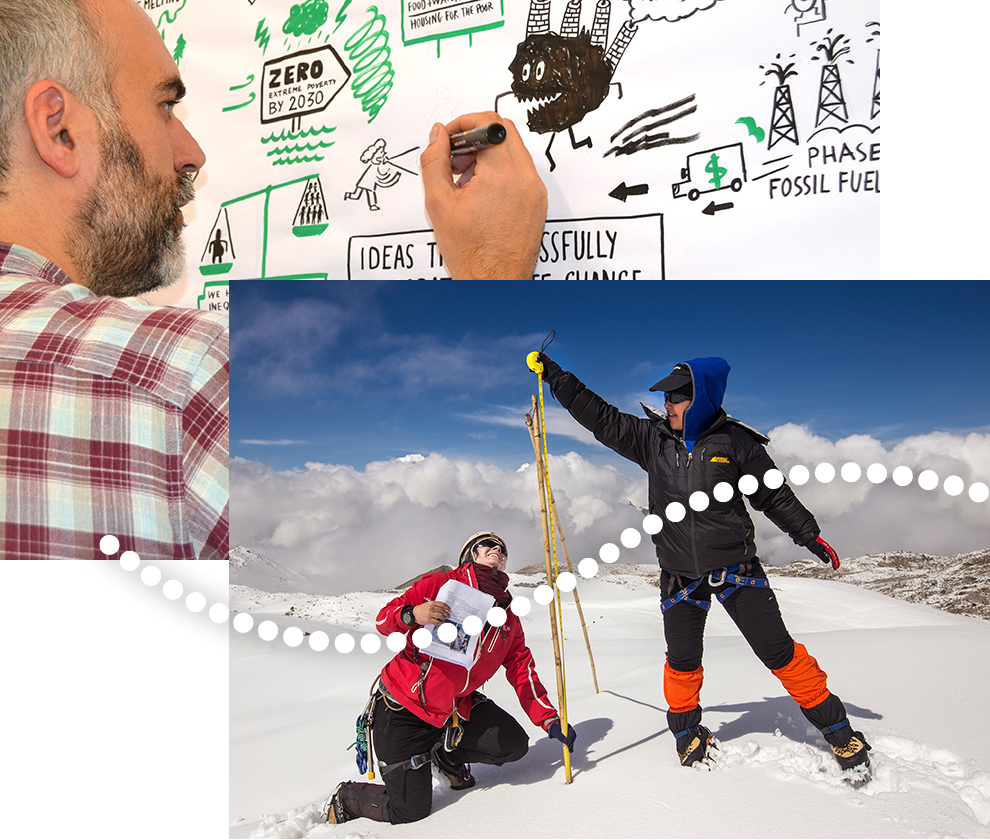COVID-19 and Climate Change: A New Paradigm in Mitigating Shared Risks

Introduction
*The full post by Prabhakar S.V.R.K can be accessed on Linkedin.
Emerging evidence suggests that COVID-19 has significant implications for climate change and has affected our prospects to mitigate and adapt to climate change differently. The impacts are emerging but we have a good picture of the direction we are heading. Most of the impacts are short-term in nature but it depends entirely on our ability to cement positive impacts and learn from the negative ones so that we can build back better.
Greenhouse gas emissions
One major positive impact of COVID-19 is on climate change mitigation. Due to large-scale shutdowns and curtailed economic activity, one can see a drastic decline in air pollution levels, greenhouse gas (GHG) emissions, and consequently even ‘cooler temperatures’ in parts of Asia. Key contributing factors are GHG emission reductions from transportation, aviation, and manufacturing sectors which constitute a large proportion of anthropogenic emissions. Several estimates are putting the GHG emission reductions in the range of 5% compared to the previous year depending on how long the COVID-19 and related restrictions will last. This is a significant reduction by any calculation especially since, despite the concerted human actions, our total GHG emissions continued to increase after the Paris Agreement (e.g. GHG emissions grew at a rate of 2.7% in 2018).
Reduced emissions and reduced outdoor air pollution levels mean a net positive impact on human health. While we do not have reliable estimates in terms of the number of human lives saved from reduced outdoor air pollution, one can ‘guesstimate’ that the impact will be significant, even after adjusting for the increased exposure to indoor air pollution levels.
Resilience and climate change adaptation
While the GHG emission and air pollution reductions have benefited the most from the COVID-19, most negative effects of COVID-19 are related to the loss of developmental gains. Large-scale unemployment, food shortages, related under and malnutrition, poor access to health care facilities (as hospitals are overwhelmed by COVID-19), and psychological impacts mean a net reduction in the social wellbeing in general in most parts of the world. Over and above these direct impacts, compound risks have also been observed in several areas that are affected by local droughts, typhoons, and other natural and manmade disasters putting even more stress on the local populations and public administration.
Many developing countries do not have robust social security systems and the governments are not in a position to support millions of people for a long period. The negative impact on the livelihoods of poor people, wage laborers, and farmers will make them even more vulnerable to the impacts of natural hazards in the years to come as their economic and social resilience has taken a severe beating during COVID-19.
Sustaining the benefits
If the current levels of GHG emission reductions could be sustained for the rest of the year, it will make a significant contribution to achieving the Paris Agreement target of a 7.6% reduction in annual GHG emissions, hopefully.
However, the experience suggests that sustaining the current level of GHG emission reduction is not practical in the long term since economies and people have suffered drastic negative economic consequences of COVID-19. What the world needs is a sustainable solution that does not put people’s lives and livelihoods at risk.
One opportunity we have is to invest in build back better in terms of our energy and transportation choices, investing in smart grids, aggressive investments in renewable energy, and most importantly to be prudent in deciding which industries need to be bailed out. For example, governments may choose to use the environmental footprint to decide which industry to be bailed out, and put in place alternative contingency measures for other sectors. However, it is easier said than done. Unfortunately, some countries have already started to bail out their emission-hungry sectors.
The wisdom to invest in transformative choices can take back seat when the priority is to kick-start the economy and to win elections.
“The wisdom to invest in transformative choices can take back seat when the priority is to kick-start the economy and to win elections”
Call for globally interconnected solutions
COVID-19 showed that we are facing a new paradigm in risks: risks are increasingly becoming globalized and compounding than ever before. Contributing factors are climate change. globalization, and regional economic and social integration processes. We have several examples to prove that risks are increasingly globalized, in addition to COVID-19: Bangkok floods of 2011 and the global food price crisis of 2008. In all these instances, risks known to be local and to remain local have gone global and impacted millions of people across the world.
National disaster risk reduction mechanisms and national adaptation planning are designed to address risks that emanate from within their boundaries. The risks emanating from outside the national boundaries are largely not recognized and solutions have not been developed because of the difficulty in understanding these risks. The information that forms the basis for understanding such risks either does not exist or is not being shared across the board. For example, the 2008 food price crisis has demanded to develop a food price early warning mechanism at the global level. Despite the efforts by several international development agencies, a reliable price early warning system couldn’t be developed so far largely because either the required information does not exist or countries are hesitant to share risk information. It is even harder to expect corporations to share information on the risks they are subjected to.
“Our inability to understand and model complex risks continues to be a major limitation to fight new and emerging risks”
Our limitation in unearthing hidden vulnerabilities before they ‘surface’ deserves urgent attention. Vulnerabilities form the basis for pressures to result in impacts. However, our vulnerability assessments are very primitive, and current methods can’t factor in the interconnected nature of vulnerabilities. As a result, vulnerability assessments and hence the risks assessed are largely incomplete and fragmented. From this point of view, we are certainly under-estimating risks.
Just like the way the risks are increasingly interconnected and globalized, the solutions also need to be seamlessly connected from the global to local scale. This calls for an increased need for seamlessly coordinated risk mitigation policies and instruments from global to a local level based on an unconditional risk information sharing.
This is where public demand can make a difference and the role of civil society organizations is paramount. The criteria to restart economies and ‘normal lives’ should be governed by the principle of building back better and natural wellbeing.

(0) Comments
There is no content